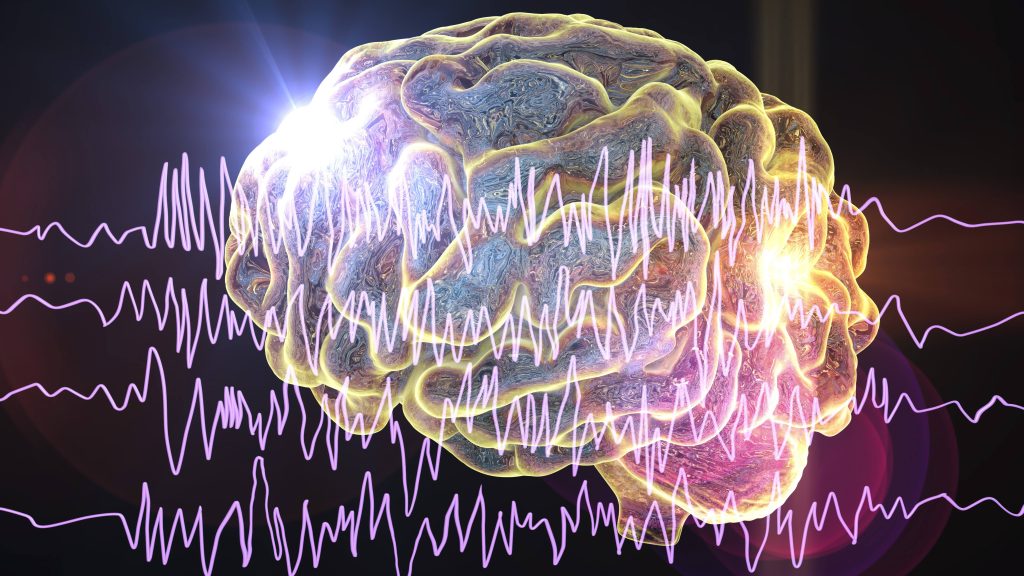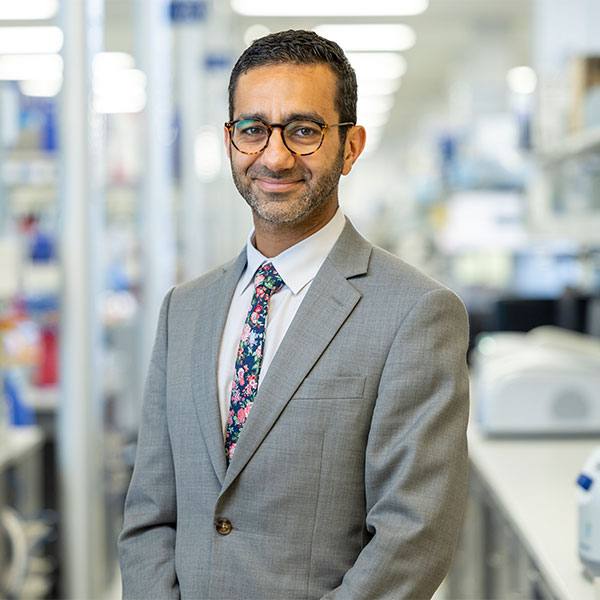-
Neurosciences
Innovation in epilepsy care: Alternatives to medication seek to reset, repair brain, expert explains

November is Epilepsy Awareness Month
PHOENIX — Medication has long been the cornerstone of treatment for people with epilepsy, but it doesn't stop seizures for everyone and may come with significant side effects. New options in use or under development include devices and gene and cell therapies aimed at resetting or rehabilitating the brain circuits that cause seizures, explains Dr. Jonathon Parker, a neurosurgeon at Mayo Clinic in Phoenix and director of the Device-Based Neuroelectronics Research Lab.
The objective is a personalized approach that provides patients with the safest, most effective treatment options for them, Dr. Parker says.
"Epilepsy on its own is very impactful on quality of life. You have these intermittent, unpredictable events or spells — electrical storms in the brain — that can affect your ability to communicate and control your body. Often, people lose consciousness," he says. "It's a really challenging disease to live with."
Medication controls seizures in many patients, but it can come with side effects such as sleepiness, cognitive changes, mood changes and a feeling of mental fogginess, further affecting quality of life, Dr. Parker explains.
Epilepsy is one of the world's most common neurological diseases. Roughly 50 million people have it, global statistics show. It can affect anyone of any age. Possible causes include genetics, brain damage, brain tumors, stroke and other blood vessel diseases, and some infections. Often, the cause of a person's epilepsy remains unknown.
"In up to one-third of patients with epilepsy medications eventually fail to control seizures," Dr. Parker says. In those cases, surgery to remove or ablate the part of the brain causing seizures has typically been the next option explored, he adds. In ablation, laser energy is channeled to disable epileptic tissue.
"However, there has been a paradigm shift and now we have new options to try to electrically rehabilitate abnormal circuitry that's causing seizures, a type of treatment called neuromodulation," Dr. Parker says. "And we're investigating regenerative therapies to try to get to the root cause and repair the brain at the cellular or molecular level rather than remove brain tissue or reset the brain."
Neuromodulation
Using deep brain stimulation techniques, neuroscientists at Mayo Clinic are looking for early signals in the brain to help stop seizures. In their biomarker discovery initiative, a team of researchers assesses how different stimulation patterns affect different parts of the brain.
"We're looking for that brain signal fingerprint that yes, these are the right stimulation settings that are pushing the brain toward a state where seizures are less likely," Dr. Parker says. "For patients having multiple attacks, sometimes per day or per week, if we're able to dramatically reduce them, it allows them to live their life in a much more predictable fashion, easier for them to do the things that they like to do in life without having to live in fear of these uncontrolled neurological attacks."
Deep brain stimulation involves implanting electrodes in the brain that produce electrical impulses to treat certain medical conditions, such as epilepsy. The team includes engineers, clinicians and neuroscientists who analyze the brain's electrical signals and extract meaning for the right settings for an individual patient's deep brain stimulation device.
Neural cell therapy
Dr. Parker and colleagues are studying cell-based therapies to help the brain restore its ability to regulate its electrical activity.
"You can think of epilepsy at some level as a disorder of abnormal regulation of brain neurons. In a healthy brain, some things excite the brain, and some things inhibit the brain. There's a never-ending balance of exciting neurons and quieting neurons down that allows the brain to function normally," he explains.
In people with epilepsy, the brain sometimes loses interneurons, the neurons that slow things down.
"You have this tendency for neurons to get very excited and then draw other neurons into that, creating a rhythmic electrical activity in the brain known as a seizure," Dr. Parker says.
The idea behind cell therapy is to transplant interneurons into the area of the brain affected by epilepsy, the temporal lobe, so the interneurons persist and help to restore the normal balance, he says.
Gene therapy
Dr. Parker is co-leader of a Mayo research team investigating potential gene therapy for epilepsy.
The approach in gene therapy is to look at specific ion channels or proteins in cells that control whether a cell is going to be active or inactive, he explains. In epilepsy, some of those gatekeepers do not work normally.
"They open and close incorrectly, or they stay open or close too long. Neurons get excited, and that excitement spreads in an uncontrolled fashion and a seizure happens," Dr. Parker says.
The team is studying the use of an adenovirus, a common virus in the body, to deliver therapy to reduce the activity of genes in the part of the brain where seizures are coming from, he says.
"The options that we have are changing," Dr. Parker says. "They're improving year after year."
For more information about innovations in epilepsy care, visit mayoclinic.org.
###
About Mayo Clinic
Mayo Clinic is a nonprofit organization committed to innovation in clinical practice, education and research, and providing compassion, expertise and answers to everyone who needs healing. Visit the Mayo Clinic News Network for additional Mayo Clinic news.
Media contact:
- Sharon Theimer, Mayo Clinic Communications, newsbureau@mayo.edu







